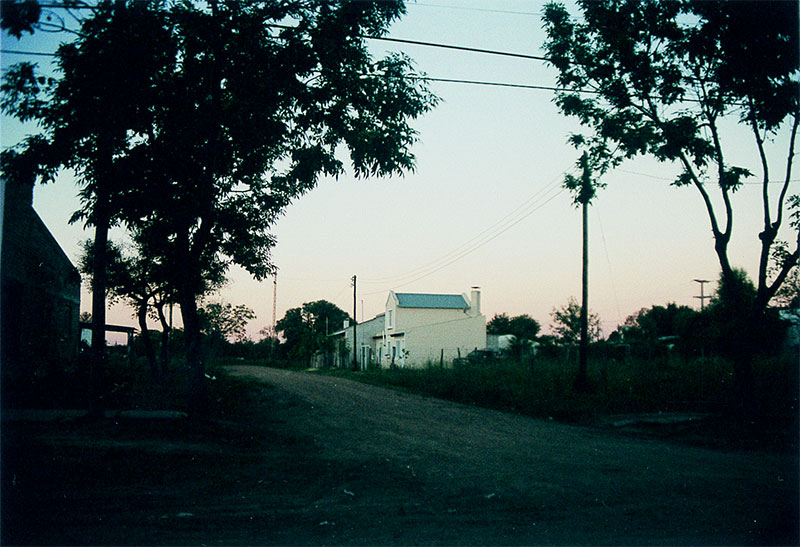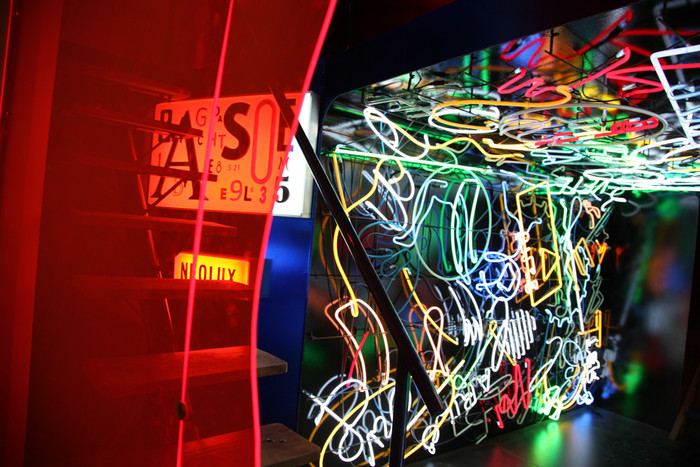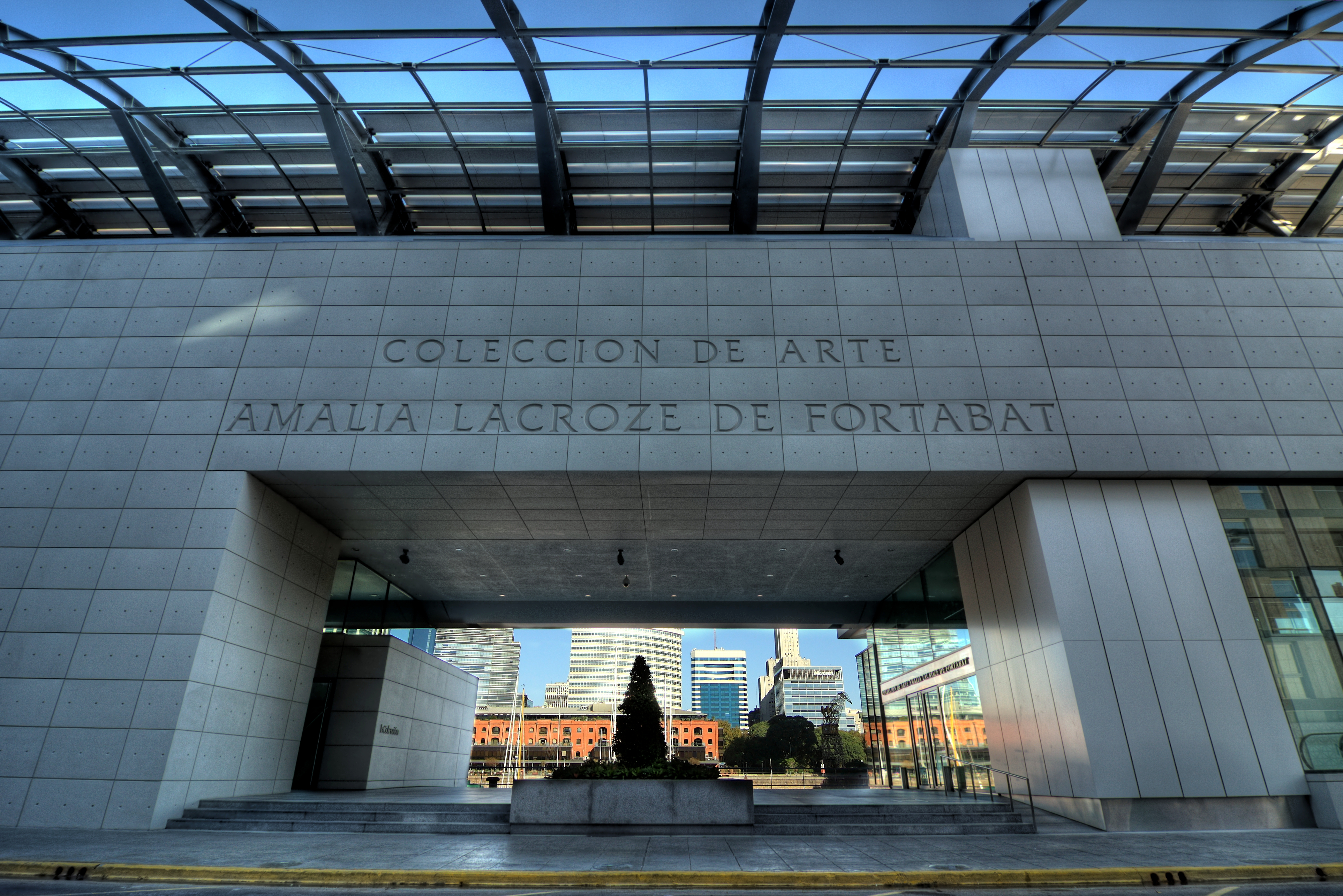|
Roberto Aizenberg
Roberto Aizenberg (22 August 1928 – 16 February 1996), nicknamed "Bobby", was an Argentine painter and sculptor. He was considered the best-known orthodox surrealist painter in Argentina. Early years Aizenberg was the grandson of Russian-Jewish immigrants who settled in the Jewish agricultural colonies of Entre Ríos Province, in the town of Villa Federal. When he was eight years old, his family moved to La Paternal, a neighborhood in Buenos Aires. He completed his secondary education at the Colegio Nacional de Buenos Aires. Aizenberg began his career as an architect, but left it to devote himself to painting. He became a student of Antonio Berni, and from 1950 to 1953 studied with the surrealist Juan Batlle Planas, an unclassifiable artist who emphasized the importance of surrealism and psychoanalysis. Career His first solo exhibition, in 1958, was at the Galeria Galatea. It was followed by six other solo exhibitions before the 1969 Torcuato di Tella Institute major r ... [...More Info...] [...Related Items...] OR: [Wikipedia] [Google] [Baidu] |
Federal, Entre Ríos
Federal is a city in the province of Entre Ríos, Argentina. It had 16,075 inhabitants per the , and is the head town of the Federal Department. It lies in the center-north of the province, by National Route 127, about 190 km northeast of the provincial capital Paraná. The basis of the local economy is the production of citrus and crops of wheat and soybean. The city has hosted the annual National Festival of Chamamé since 1976. The town was officially founded on 7 September 1880 by provincial governor . The creation and shaping of the first institutions of this settlement was due to a Spanish immigrant, Antonio Flores. Federal is the exact antipode of the Chinese city of Shanghai Shanghai (; , , Standard Mandarin pronunciation: ) is one of the four direct-administered municipalities of the People's Republic of China (PRC). The city is located on the southern estuary of the Yangtze River, with the Huangpu River flow ..., the third most populous city in the wor ... [...More Info...] [...Related Items...] OR: [Wikipedia] [Google] [Baidu] |
Torcuato Di Tella Institute
The Torcuato di Tella Institute is a non-profit foundation organized for the promotion of Argentine culture. Overview 1959-1960 The Di Tella Foundation and its institute were created on July 22, 1958, the tenth anniversary of the death of industrialist and arts patron[Torcuato Di Tella. Funding for the project, organized by his sons, Torcuato and Guido Di Tella, was raised using the United States model of corporate financing, as well as by the donation of 10% of the SIAM Di Tella corporation's public stock. Its objective was initially limited to an arts program revolving primarily around the display of the Di Tella family's private collections, which prominently included works by Henry Moore, Pablo Picasso, Amedeo Modigliani and Jackson Pollock. The board of the foundation consisted of family members, though the institute was directed by a board that included academics and intellectuals from outside the family. Guido Di Tella would serve as president, and the post of director of ... [...More Info...] [...Related Items...] OR: [Wikipedia] [Google] [Baidu] |
Automóvil Club Argentino
The Argentine Automobile Club ( es, Automóvil Club Argentino, ACA) is Argentina's largest automobile association. It was founded on June 11, 1904, by Dalmiro Varela Castex, who in 1892 had imported the country's first registered automobile, a Daimler, and in 1894 its second (a De Dion-Bouton). The ACA oversaw the first recorded Argentine auto racing event, in 1906, and became a member of the International Automotive Federation in 1926. It began to develop of national network of service stations following a 1936 agreement with the state oil concern, YPF. Offering its membership cartographic, roadside assistance, insurance and other services, the ACA was inducted into the International Tourism Alliance in 1952. Its national headquarters, designed in the Rationalist style by local architect Antonio U. Vilar and collaborators Alejandro Bustillo, was completed in 1942 on Buenos Aires' Avenida del Libertador. The building and its automobile museum are Palermo neighborhood landmark ... [...More Info...] [...Related Items...] OR: [Wikipedia] [Google] [Baidu] |
Museo Nacional De Bellas Artes (Buenos Aires)
The Museo Nacional de Bellas Artes ("National Museum of Fine Arts") is an Argentine art museum in Buenos Aires, located in the Recoleta section of the city. The Museum inaugurated a branch in Neuquén in 2004. The museum hosts works by Goya, Rembrandt, Van Gogh, Rodin, Manet and Chagall among other artists. History Argentine painter and art critic Eduardo Schiaffino, was the first director of the museum, which opened on 25 December 1895, in a building on Florida Street that today houses the Galerías Pacífico shopping mall. In 1909, the museum moved to a building in Plaza San Martín, originally erected in Paris as the Argentine Pavilion for the 1889 Paris exhibition, and later dismantled and brought to Buenos Aires. In its new home, the museum became part of the International Centenary Exhibition held in Buenos Aires in 1910. Following the demolition of the pavilion in 1932, as part of the remodeling of Plaza San Martín, the museum was transferred to its present location ... [...More Info...] [...Related Items...] OR: [Wikipedia] [Google] [Baidu] |
Tarquinia
Tarquinia (), formerly Corneto, is an old city in the province of Viterbo, Lazio, Central Italy, known chiefly for its ancient Etruscan tombs in the widespread necropoleis, or cemeteries, for which it was awarded UNESCO World Heritage status. In 1922, it was renamed after the ancient city of Tarquinii (Roman) or Tarch(u)na (Etruscan). Although little is visible of the once-great wealth and extent of the ancient city, archaeology is increasingly revealing glimpses of past glories. Location The Etruscan and Roman city is situated on the long plateau of La Civita to the north of the current town. The ancient burial grounds (necropoleis), dating from the Iron Age (9th century BC, or Villanovan period) to Roman times, were on the adjacent promontories including that of today's Tarquinia. History Etruscan city Tarquinii (Etruscan ''Tarch(u)na'') was one of the most ancient and important Etruscan cities; the ancient myths connected with Tarchuna (those of its eponymous founder ... [...More Info...] [...Related Items...] OR: [Wikipedia] [Google] [Baidu] |
Forced Disappearance
An enforced disappearance (or forced disappearance) is the secret abduction or imprisonment of a person by a state or political organization, or by a third party with the authorization, support, or acquiescence of a state or political organization, followed by a refusal to acknowledge the person's fate and whereabouts, with the intent of placing the victim outside the protection of the law. According to the Rome Statute of the International Criminal Court, which came into force on 1 July 2002, when committed as part of a widespread or systematic attack directed at any civilian population, a "forced disappearance" qualifies as a crime against humanity, not subject to a statute of limitations, in international criminal law. On 20 December 2006, the United Nations General Assembly adopted the International Convention for the Protection of All Persons from Enforced Disappearance. Often, forced disappearance implies murder: a victim is abducted, may be illegally detained and of ... [...More Info...] [...Related Items...] OR: [Wikipedia] [Google] [Baidu] |
National Reorganization Process
The National Reorganization Process (Spanish: ''Proceso de Reorganización Nacional'', often simply ''el Proceso'', "the Process") was the military dictatorship that ruled Argentina from 1976 to 1983, in which it was supported by the United States until 1982. In Argentina it is often known simply as última junta militar ("last Military dictatorship, military junta"), última dictadura militar ("last military dictatorship") or última dictadura cívico-militar ("last civil–military dictatorship"), because there have been several in the country's history and no others since it ended. The Argentine Armed Forces seized political power during the 1976 Argentine coup d'état, March 1976 coup against the presidency of neutralist (non-Communist or non-Democratic) Isabel Perón, the successor and widow of former President Juan Perón, at a time of growing economic and political instability. National Congress of Argentina, Congress and democracy were suspended, political parties were b ... [...More Info...] [...Related Items...] OR: [Wikipedia] [Google] [Baidu] |
Primera Plana
''Primera Plana'' was a weekly glossy political, cultural and current affairs magazine published in Buenos Aires, Argentina, between 1962 and 1973. The magazine was very influential in shaping the journalism tradition in the country. History and profile ''Primera Plana'' was created in 1962 by Jacobo Timerman. The magazine modeled on ''Newsweek'' and ''Time'' magazines. It was founded to support for the supposedly liberal wing of the military forces. The headquarters of the magazine was in Buenos Aires. The magazine was published on a weekly basis and featured articles on culture and current affairs. The weekly had a nationalist stance. It also supported for cultural nationalism and modernization as well as political authoritarianism. It was the first magazine to publish the comic strip ''Mafalda''. Mafalda, produced by Joaquin Salvador Lavado, was first published in the magazine on 29 September 1964. ''Primera Plana'' was also the first magazine in Argentine which published a ... [...More Info...] [...Related Items...] OR: [Wikipedia] [Google] [Baidu] |
Fortabat Art Collection
The Amalia Lacroze de Fortabat Art Collection is a museum of fine arts in Buenos Aires, Argentina. Overview The museum was initiated by María Amalia Lacroze de Fortabat, the longtime chairperson and chief stockholder of Loma Negra, the largest cement manufacturer in Argentina. She set aside a significant portion of her extensive art collection for the purpose, and her foundation contracted internationally acclaimed, Uruguayan born architect Rafael Viñoly for its design. The building, a two-story modernist concrete, steel and glass structure, began construction in 2002 and provides over of indoor space. Built overlooking the northernmost dock in the Puerto Madero district, among its highlights include a roof with a system of mobile aluminum awnings that open and close with the sun's position. Mrs. Fortabat specifically requested this last design feature, remarking that ''"I've always wanted to look at pictures and the stars at the same time."'' The museum was inaugurated on O ... [...More Info...] [...Related Items...] OR: [Wikipedia] [Google] [Baidu] |
Renaissance
The Renaissance ( , ) , from , with the same meanings. is a period in European history marking the transition from the Middle Ages to modernity and covering the 15th and 16th centuries, characterized by an effort to revive and surpass ideas and achievements of classical antiquity. It occurred after the Crisis of the Late Middle Ages and was associated with great social change. In addition to the standard periodization, proponents of a "long Renaissance" may put its beginning in the 14th century and its end in the 17th century. The traditional view focuses more on the early modern aspects of the Renaissance and argues that it was a break from the past, but many historians today focus more on its medieval aspects and argue that it was an extension of the Middle Ages. However, the beginnings of the period – the early Renaissance of the 15th century and the Italian Proto-Renaissance from around 1250 or 1300 – overlap considerably with the Late Middle Ages, conventionally da ... [...More Info...] [...Related Items...] OR: [Wikipedia] [Google] [Baidu] |
Giorgio De Chirico
Giuseppe Maria Alberto Giorgio de Chirico ( , ; 10 July 1888 – 20 November 1978) was an Italian artist and writer born in Greece. In the years before World War I, he founded the '' scuola metafisica'' art movement, which profoundly influenced the surrealists. His most well-known works often feature Roman arcades, long shadows, mannequins, trains, and illogical perspective. His imagery reflects his affinity for the philosophy of Arthur Schopenhauer and of Friedrich Nietzsche, and for the mythology of his birthplace. After 1919, he became a critic of modern art, studied traditional painting techniques, and worked in a neoclassical or neo-Baroque style, while frequently revisiting the metaphysical themes of his earlier work. Life and works Giuseppe Maria Alberto Giorgio de Chirico was born in Volos, Greece, as the eldest son of Gemma Cervetto and Evaristo de Chirico. His mother was a baroness of Genoese originsNikolaos Velissiotis"The Origins of Adelaide Mabili and Her ... [...More Info...] [...Related Items...] OR: [Wikipedia] [Google] [Baidu] |
Instituto Universitario Nacional Del Arte
The National University of the Arts, in Spanish: ''UNA - Universidad Nacional de las Artes'', formerly known as IUNA - Instituto Universitario Nacional de las Artes, is an Argentine university established in 1996 as an incorporation of various national institutions dedicated to the teaching of fine arts. The origins of the current UNA University lay in the 1875 founding of the National Society of the Stimulus of the Arts by painters Eduardo Schiaffino, Eduardo Sívori, and others. Their guild was rechartered as the National Academy of Fine Arts in 1905 and, in 1923, on the initiative of painter and academic Ernesto de la Cárcova, as a department in the University of Buenos Aires, the Superior Art School of the Nation. The latter in 1927 created the Museum of Reproductions and Comparative Sculpture. In 1936 theatre director Antonio Cunill Cabanellas founded the National Institute of Theatrical Studies. These institutions of Performing Arts, including the Carlos López Buchardo ... [...More Info...] [...Related Items...] OR: [Wikipedia] [Google] [Baidu] |







